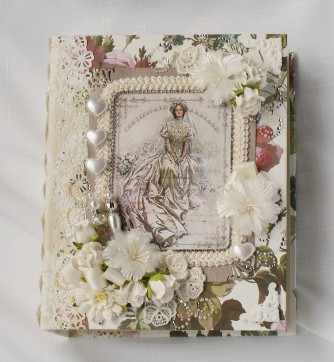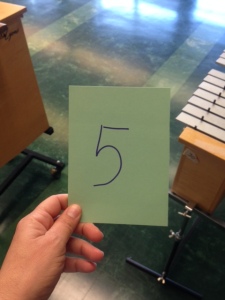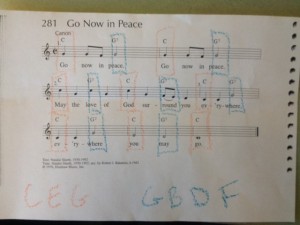Tagged: catholicmusick8
The true meaning of the Annual Christmas Program
For many, the annual Christmas Program is the only time teachers, staff, parents, grandparents, and community members will see their child’s music teacher in action.
Frequently, the music teacher alone is responsible for nearly all of the key aspects that are “on stage” during this program:
- liturgically sound, age-appropriate seasonal repertoire
- instrumental and/or vocal technique
- performance skills – entering and exiting the performance area, standing still, executing rhythmic movement/choreography, speaking slowly and clearly into a microphone, among others
- costume design
- designing and formatting the program
- conducting and guiding the students (with a smile plastered to your face!)
Then there are the “off stage” items, which may include, but are not limited to:
- communicating with principals, teachers, parents, custodians, and accompanists
- drawing the map that shows where everyone sits by grade level and how and when to get on and off the risers
- classroom rehearsals
- figuring out the sound system
- dress rehearsal
- small group rehearsals during your only planning period
- thank you notes
Now go home and wrap presents, cook and bake for a week straight, and conduct and sing at your parish midnight mass (if you are as crazy as I am).
Actually, after 15 years of producing mostly successful Christmas programs, the Elementary Christmas Program is for me a major source of Christmas spirit warm-fuzzies. I would sorely be lacking in Christmas spirit without these labors of love.
This year, one line from Luke’s gospel (read by a sweet little fourth grader) summed it up for me:
“And Mary kept all these things, reflecting on them in her heart.”
Although I’m not one for making them, I love the idea of scrapbooks. My own children have received some of the most lovingly assembled scrapbooks from teachers who wanted them to remember how special that particular school year was. As they get older, the kids love looking at their four-year old scrapbook with pictures of them with Santa, learning to write their name, playing with friends….
Handmade scrapbooks honor important events and experiences in our lives. I am grateful for the people who take time to carefully choose the materials, themes, pictures, illustrations, and captions, and format these small notions into a beautiful remembrance.
A beautiful, visceral remembrance is what the annual Christmas program is all about.
Songs taught with care for beautiful singing. Poems and scripture read clearly and slowly so grandma’s hearing aid can pick it up. Instruments played with loving precision. The smell of hot glue on felt. All of these make up a scrapbook for the soul.
Music Class: October 5 – 9, 2015
HERE’S WHAT WE DID:
Keeping the Beat: Concerto No. 10 in C Major: Allegro by Arcangelo Corelli (love his name!) (K, 1st, 2nd, 3rd, 4th, 5th)
Beat motions are big this week! I have owned this under-utilized CD for years. This year, I am going to be more faithful to it. We “moved” to the Corelli on Monday, and when I started playing it on Friday, the students recognized it immediately and started grooving.
King’s Land (K & 1st)
This “so-la-so-mi” singing game with final “do” is thrilling for Kindergarten, 1st grade, toddlers, and Pre-K types. I change “Boston” to London and instead of tagging, encourage all the beat keeping/dancing students to music-room run back to their benches when the alert sounds that the king is approaching (me furtively ringing a tone chime). This game will serve as a segue to a “movement for form and expression” activity next week featuring the King, Queen, Prince, Princess, and a Hungarian Dance, by Brahms.
See the Autumn Leaves (K, 1st, 2nd, 3rd, 4th, 5th)
OForTunaOrff.Blogspot is quickly becoming one of my go-to inspiration resources. This little fall ditty was a seasonal opportunity to discover rest (silent beats), aurally decode for ta and titi, play instruments on an assigned rhythmic phrase, distinguish between beat and rhythm, and more!
Children’s Mass: Blessing of the Pets – Our Lady of the Rosary
Before Mass, a simple liturgy for the Blessing of the Pets was held on the steps of the Cathedral. With temps in the low 40’s, many pets were blessed including a bearded dragon, a snapping turtle, a rabbit, and several cats and dogs, among others.
Entrance Hymn: Holy God, We Praise Thy Name (GROSSER GOTT)
Responsorial Psalm: Psalm 34 Taste and See the goodness of the Lord Vs. 1, 2, 3 (Guimont)
Gospel Acclamation: Alleluia from Mass for John Carroll
Prayers of the Faithful: O God, Hear Us, Hear Our Prayer (??? our old xerox of this response looks like GIA, but i don’t know what book)
Presentation of the Gifts: Canticle of the Sun (Haugen)
Eucharistic Acclamations and Lamb of God: Mass of Joy and Peace (Manolo)
Communion: Life Giving Bread, Saving Cup (Chepponis)
Closing Hymn: Go Now In Peace (Sleeth)
Music Class Liturgy Prep:
Psalm 34 – Guimont
The Guimont and Gelineau tones provide great staff reading and ear training opportunities for new and younger choristers. I used solfege to teach the tones for the verses, then we added words to the tone. After teaching it to all seven of my eager 6th grade singers, I asked one to volunteer to sing the psalm with me (on the job training!) at Mass. She did a great job! Hopefully, other future psalm cantors will come out of the woodwork after seeing her example.
Music Class: September 28 – October 2, 2015
HERE’S WHAT WE DID:
Chant Rhythm Set 1A with Carnival of the Animals Finale (2nd, 3rd, 4th, 5th)
We chanted the rhythms without music.
To keep the older grades on their toes, I held up a card with the number of the rhythmic phrase (1 through 8) that I wanted them to chant. The younger grades just went in order.
The Finale from Carnival of the Animals works perfectly for accompanied chanting: the introduction gives me just enough time to press play and run to the board! There’s also an interval during the music where you can stop chanting and take a break for a few seconds before picking back up.
Xylophone Ostinato for Scotland’s Burning
Students played a simple ostinato on their shoulders and xylo/metallophone C-F (curly fries) while singing Scotland’s burning. Before taking their turn on the instrument, the student gets “trained” by the previous player. This ostinato was difficult for some, especially after the first phrase of the song. Tapping the ostinato rhythm on the player’s shoulders seemed to help.
Go Now In Peace by Natalie Sleeth with tone chimes!
We’ve been working on this simple dismissal song for both classroom and Mass. It was also a nice opportunity to learn about chords (C and G7). Color coded scores are a quick and easy way to get students on the tone chimes:




